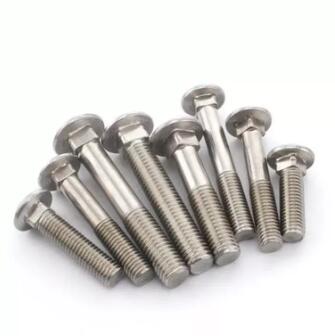Navigating Challenges: Exploring the Disadvantages of High-Strength Bolts
2023-11-20
Introduction
While high-strength bolts are widely acclaimed for their superior performance and resilience in construction and engineering projects, it's essential to recognize that they aren't without their challenges. In this blog post, we'll delve into the disadvantages associated with the use of high-strength bolts, offering a balanced perspective on these powerful fasteners.
1. Cost Considerations: The Price of Performance
One significant drawback of high-strength bolts is their higher cost compared to standard bolts. The materials used, such as alloy steels with specific additives, contribute to elevated manufacturing expenses. This cost factor can be a crucial consideration, especially in projects with tight budget constraints, where the expense of using high-strength bolts may outweigh their benefits.
2. Specialized Installation Requirements: Precision is Key
High-strength bolts often require specialized installation procedures involving precise torque control and tensioning. Achieving the correct level of tension is crucial for the bolts to perform optimally. This demands skilled labor, specialized equipment, and careful adherence to installation guidelines. If these requirements are not met, it can compromise the effectiveness of the high-strength bolts and, consequently, the structural integrity of the entire project.
3. Brittleness: A Trade-Off for Strength
The enhanced strength of high-strength bolts often comes with a trade-off – increased brittleness. While these bolts excel in withstanding tensile forces, they may be more susceptible to brittle fracture under certain conditions, particularly in applications where impact or shock loading is a concern. This brittleness can pose challenges in scenarios where toughness is a critical requirement.
4. Reduced Ductility: Flexibility Trade-offs
Ductility, the ability of a material to deform without breaking, is another area where high-strength bolts may have limitations. While these bolts offer impressive strength, they may exhibit reduced ductility compared to standard bolts. In situations where a certain degree of flexibility is desirable, such as in seismic-resistant structures, the reduced ductility of high-strength bolts may be a drawback.
5. Limited Availability: Sourcing Challenges
Not all construction projects require the use of high-strength bolts, and as a result, they may not be as readily available as standard bolts. This can pose challenges in terms of sourcing, lead times, and logistics, especially in regions where the demand for high-strength bolts is not as prevalent. Construction timelines may be impacted if there are delays in obtaining the required fasteners.
6. Corrosion Concerns: Material Composition Matters
While some high-strength bolts are made from corrosion-resistant materials, others may be susceptible to corrosion, especially in harsh environmental conditions. It's essential to carefully consider the specific material composition of the high-strength bolts in relation to the project's environmental exposure. In corrosive environments, additional corrosion protection measures may be necessary, adding to the overall project cost.
Conclusion
High-strength bolts undoubtedly offer a range of advantages in terms of strength, load-carrying capacity, and performance. However, like any engineering solution, they come with their set of challenges. It's crucial for engineers, builders, and project managers to weigh the benefits against the disadvantages, considering factors such as cost, installation requirements, brittleness, and availability. By carefully evaluating these aspects, stakeholders can make informed decisions about whether high-strength bolts are the right choice for a particular construction project or if alternative solutions may better suit the project's requirements and constraints.



